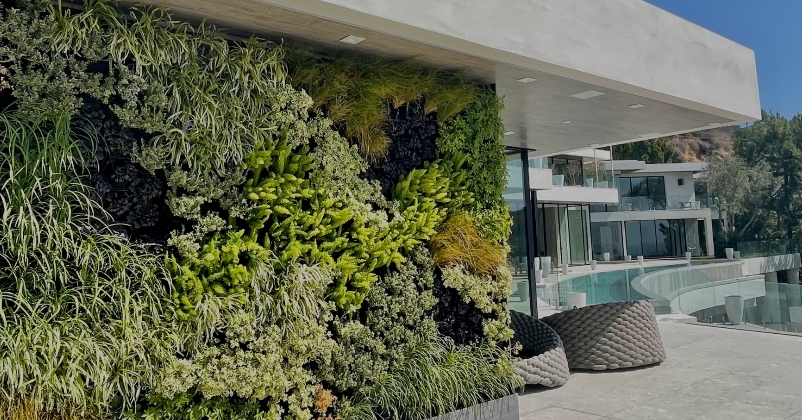
Greenwalls have seen quite an expansion in popularity – and for good reason. They are beautiful, green, nature-friendly, soothing, and a style statement for any space. Plus, they are pretty easy to maintain, and are in many ways a superior alternative to potted plants that can sometimes seem all over the place. The watering of living greenwall setups is made simple by more or less self-sufficient greenwall irrigation systems. Here’s an overview of two main types of irrigation systems that you can use for your living greenwall.
Direct Irrigation System
One way to water your greenwall is directly through the city pipeline, or any other external water source. In direct irrigation, water is channeled through the greenwall with the help of existing water pressure and gravity, and distributed to the plants on the walls. Any excess water is sent out to the sewer drain and discarded.
There is no recirculation or reuse of water in this system, which translates into some wastage.
Recirculating Greenwall Irrigation System
For areas without a water source or drainage, recirculating living walls are the best solution. It is also a great way to conserve water. Here’s how it works.
● The source of water in a recirculating system is an irrigation tank that is either remote-controlled or directly beneath the greenwall.
● To ensure an adequate supply of irrigation water, the irrigation tank is manually filled on a regular basis. The tank’s water is pumped to the greenwall, where it is distributed to the plants.
● Gravity draws extra water downward, where it collects to be fed back into the tank at the bottom of the wall.
● This water is used repeatedly to water the plants on the greenwall.
Manual Watering
A third type of irrigation is manual watering, in which the person caring for the greenwall uses a water receptacle to provide water to the greenwall system. This could be a tank on wheels or just a watering can.
Manual watering is typically used on smaller greenwalls. The advantage of manual irrigation is that it does not require electricity or plumbing.
Bonus Tips To Get Irrigation Right
● Before you plant your greenwall, test the irrigation system to make sure the water flows smoothly. There should be an even flow at the top of the system when you have all the tubing in place and the pump connected.
● Establish a schedule to keep track of tank fillings. Additionally, you can set the timer to sound when the pumps are drawing air and the water level is low.
● To keep the tanks full, add water once a week. Use clean, fresh water from the tap.
● Make sure not to overfill the tank. While the system is running, do not add any water. Wait for the drips to stop completely. Water that accumulates in the wall will eventually fill the tanks and cause them to overflow.
● As a result of evaporation and water use by the plants, highly concentrated water containing hard water deposits, chemicals, fertilizer salts, etc. will start to form. As a result, you’ll need to change the water three or four times a year.
To get your vertical garden installed perfectly, get in touch with the best indoor garden wall planter in the USA, GrowUp Greenwalls.



